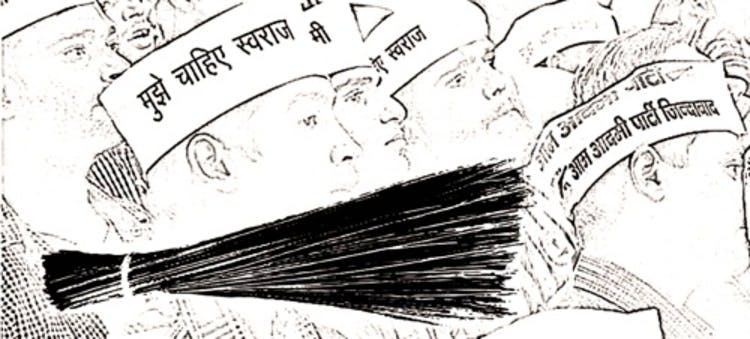By Kabir Nanda
In an age of breaking news, short attention spans and daily scandals, perspective pays.
With everything from #AAPforlife to #anarchy to #ChutiyAAP trending these days, and everyone peddling their opinions on AAP, it has become truly impossible for the aam Dilliwaala to make head or tail of what’s going on. You either voted for AAP, or you didn’t. Or you didn’t vote at all, in which case this article is most important for you. In order to understand what a political party might be capable/incapable of, it’s important to listen to a broad spectrum of views before deciding on which end of the spectrum you stand. And these features aim to do exactly that.
The meteoric rise of the Aam Aadmi Party {AAP}, spearheaded by former bureaucrat and anti-corruption activist Arvind Kejriwal, has caught more than a few people {particularly our old, entrenched political parties} by surprise. From being dismissed by the media, the political class and many of us alike, they have now stormed their way onto television screens, political strategy and arithmetic, and living-room discussions, as a potentially viable alternative to ‘business as usual’.
Their low-cost, innovative campaign – which combined transparency and a broad anti-corruption agenda coupled with local issues – showed us that elections can be won without large amounts of {often ill-gotten} money. Arvind Kejriwal is now the Chief Minister of a minority government in Delhi, and his party is making a push for the 2014 general election with an all-India recruitment drive.
As we build up to a general election that will see, according to Census 2011, almost 150 million first-time voters, we at LBBD thought that we’d provide our readers with some material on AAP to help them form a view on its pros, cons, policies, and prospects.
'Overcoming Cynicism' by Pratap Bhanu Mehta
Pratap Bhanu Mehta examines the churning taking place in our polity, with progressives finding their feet and demanding an effective, reliable architecture of governance. Within this, the AAP has injected a dose of vitality, and the possibility of the new.
Read more here.
'A dialogue on AAP' by Shankar Acharya
Shankar Acharya constructs a hypothetical dialogue between an AAP optimist and an AAP cynic. The results are very interesting, and the gamut of issues that occupy enthusiasts and sceptics alike come to surface – such as water and electricity subsidies, crony capitalism, and AAPs capability to govern and create growth.
Read more here.
'Transformational politics' by The Hindu Editorial
Short editorial on the AAP using public consultation to gain legitimacy in the post-election deadlock in Delhi.
Read more here.
'Decoding AAP’s manifesto: Big govt, big spending, more taxes' by R Jagannathan
R Jagannathan’s take on the AAP manifesto for Delhi, with specific comments on every issue raised in it.
Read more here.
'Not a worm’s eye view' by Sevanti Ninan
Sevanti Ninan looks at the media response to recent AAP activities in Delhi, and how it shows us how pro- establishment our own instincts can be.
Read more here.
'The antics of a Chief Minister' by The Hindu Editorial
The Hindu looks at the illegitimacy of AAP's alleged vigilantism, and what its underlying political motivations might be.
Read more here.
About the Author | Kabir Nanda has degrees in Economics from Hindu College, University of Delhi and The University of Warwick. He currently works at Dalberg Global Development Advisors, a management consultancy that focuses on international development issues.

